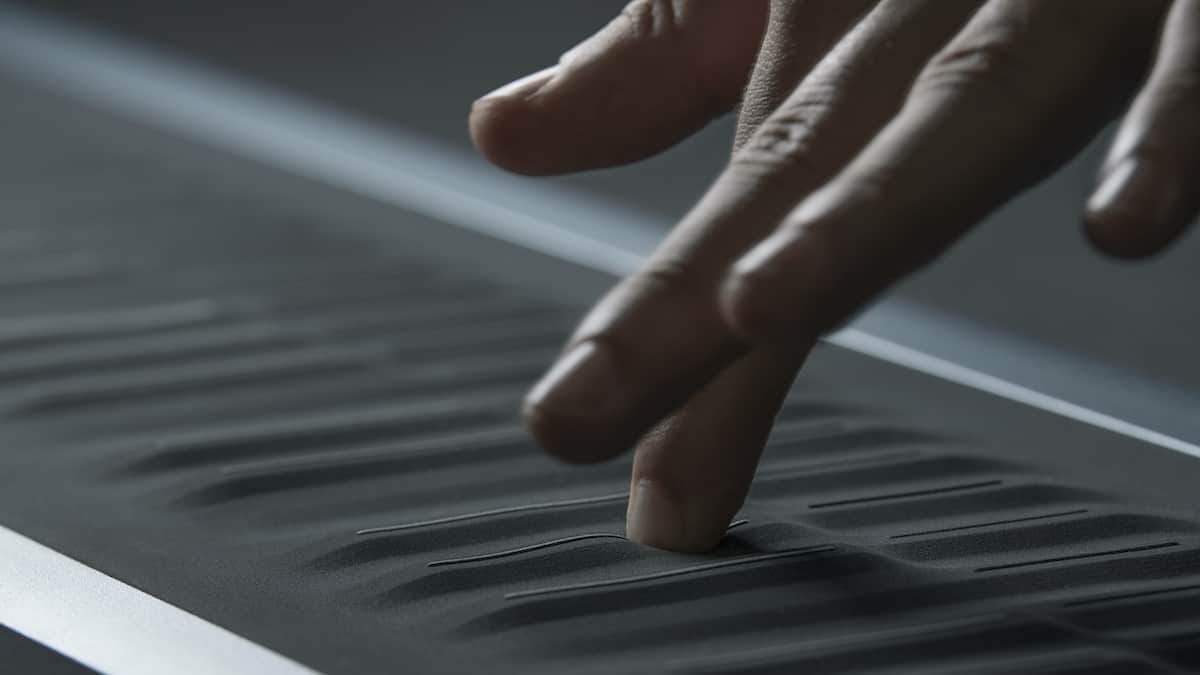Editor Note
You Can’t Imagine Five Dimensions, But You Can Play Them

Pardon the expression
Our 3D world is made up of width, height, depth, and also time. The fifth dimension has to do with possibilities, which sets up an excruciatingly lame intro to some comments about MIDI’s expressive possibilities.
This month’s cover shows a single finger on the upcoming ROLI Seaboard Rise 2, an instrument billed as having 5-dimensional control. Those five dimensions are attack and release velocity, pressure, sideways movement, and front/back movement.
And that guy is controlling all that with just one finger, what a theoretical physicist would describe as 10^1% of all available appendages. Each of the other nine digits has the same degree of freedom.
That provides at least as much expressive control as, say, a violinist has when moving a finger subtly on the fingerboard to vary the tone. “At least,” because electrified and electronic instruments can have a much wider range of amplitude and frequency variation than acoustic ones.
Presumably the fact that ROLI re-formed as a company and is coming out with that new, high-end controller keyboard is a measure of the interest in this kind of musical subtlety. We sure hope so.
Now, MPE – MIDI Polyphonic Expression – has become an official part of the MIDI spec, and it will be water under the bridge when MIDI 2.0 takes off. What distinguishes MPE is that the controller moves are sent on different channels, so in this case each note can be controlled independently. The same could apply to individual strings on a MIDI guitar, for example.
But while MPE-compatible controllers have more independent control than standard ones that send everything on a single channel, musical expression is certainly not all or nothing. Most MIDI keyboards have various controllers that can be mapped however you want, whether it’s polyphonic or channel aftertouch, release velocity, ribbon controllers, faders, just the mod and pitch wheels, inputs for pedals, breath controller inputs, and so on.
It’s probably worth breaking out the manual to see whether your controller keyboard(s) have any features you’re not using.
And then there’s the receiving end. Which physical controllers you map to what parameters is subjective, but – because it can take some practice – it might be a good idea to maintain some consistency from instrument to instrument.
A setup might look like this:
– Note-on velocity to initial amplitude, possibly attack envelope speed, maybe brightness.
– Sliding forward and back to brightness or some other form of increased/decreased intensity.
– Sideways wiggles to pitch. That would seem to be the most intuitive.
– Aftertouch (pressure) to amplitude. Same if it’s polyphonic aftertouch, meaning each note has its own independent aftertouch.
– Release velocity to release envelope speed (release more slowly to make the note cut off more slowly).
And so on. A lot of instruments and especially sample libraries have preset controller setups, and you can decide whether or not to keep or change them. That’s done by changing the MIDI messages each physical control sends on your controller, or by remapping them in your DAW.
It can take a little practice getting used to modulating synth sounds in real time, but it’s really not hellishly difficult – and the effort is worth it. The good news is that fancy modulation moves are likely to be on sustained notes, so nothing much happens very quickly.
















